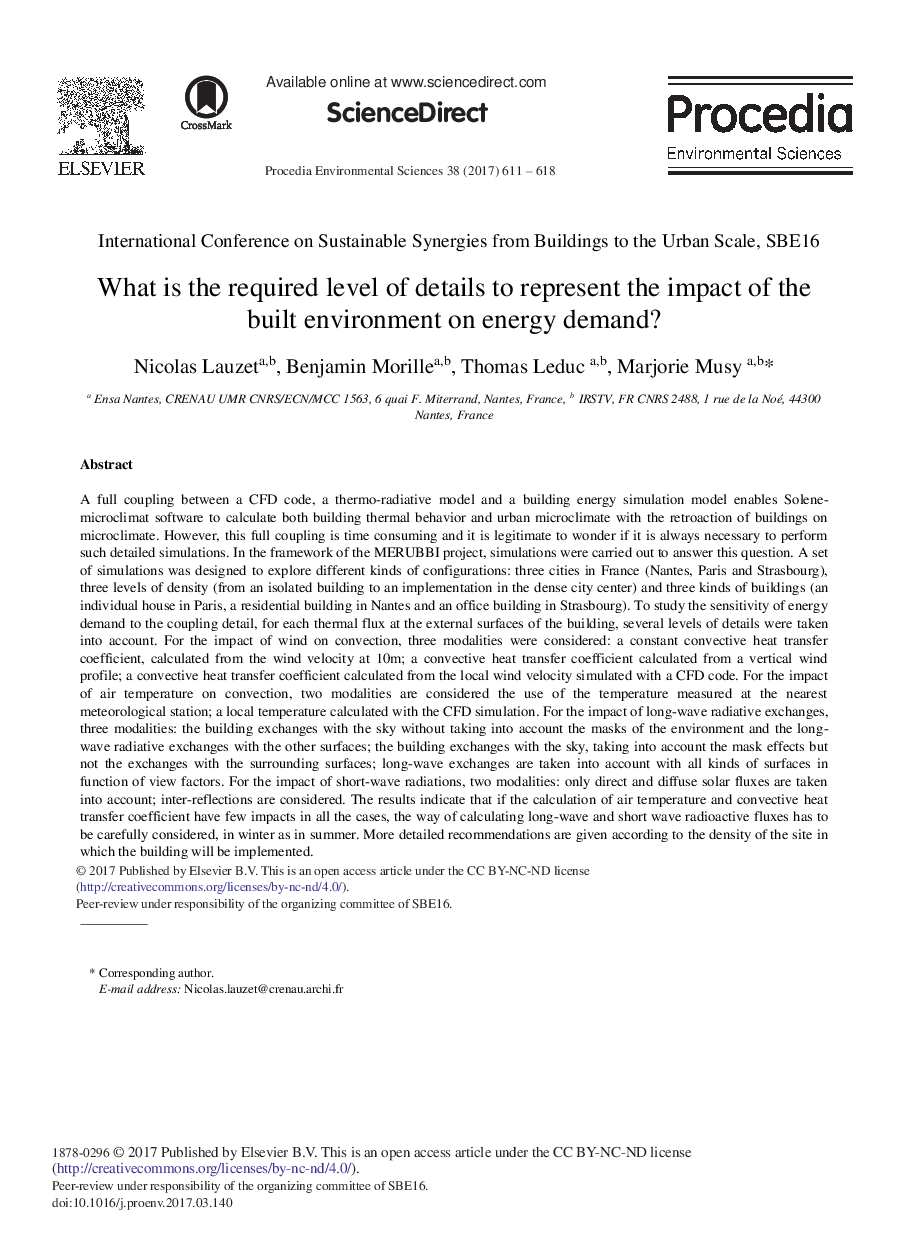| کد مقاله | کد نشریه | سال انتشار | مقاله انگلیسی | نسخه تمام متن |
|---|---|---|---|---|
| 5745083 | 1618606 | 2017 | 8 صفحه PDF | دانلود رایگان |
عنوان انگلیسی مقاله ISI
What is the Required Level of Details to Represent the Impact of the Built Environment on Energy Demand?
ترجمه فارسی عنوان
سطح مورد نیاز برای جزئیات تأثیر محیط ساخته شده بر تقاضای انرژی چیست؟
دانلود مقاله + سفارش ترجمه
دانلود مقاله ISI انگلیسی
رایگان برای ایرانیان
کلمات کلیدی
تقاضای انرژی، کلمۀ شهری، شکل شهری، تابش طولانی مدت، همرفت، ماسک خورشیدی،
موضوعات مرتبط
علوم زیستی و بیوفناوری
علوم محیط زیست
بوم شناسی
چکیده انگلیسی
A full coupling between a CFD code, a thermo-radiative model and a building energy simulation model enables Solene-microclimat software to calculate both building thermal behavior and urban microclimate with the retroaction of buildings on microclimate. However, this full coupling is time consuming and it is legitimate to wonder if it is always necessary to perform such detailed simulations. In the framework of the MERUBBI project, simulations were carried out to answer this question. A set of simulations was designed to explore different kinds of configurations: three cities in France (Nantes, Paris and Strasbourg), three levels of density (from an isolated building to an implementation in the dense city center) and three kinds of buildings (an individual house in Paris, a residential building in Nantes and an office building in Strasbourg). To study the sensitivity of energy demand to the coupling detail, for each thermal flux at the external surfaces of the building, several levels of details were taken into account. For the impact of wind on convection, three modalities were considered: a constant convective heat transfer coefficient, calculated from the wind velocity at 10m; a convective heat transfer coefficient calculated from a vertical wind profile; a convective heat transfer coefficient calculated from the local wind velocity simulated with a CFD code. For the impact of air temperature on convection, two modalities are considered the use of the temperature measured at the nearest meteorological station; a local temperature calculated with the CFD simulation. For the impact of long-wave radiative exchanges, three modalities: the building exchanges with the sky without taking into account the masks of the environment and the long-wave radiative exchanges with the other surfaces; the building exchanges with the sky, taking into account the mask effects but not the exchanges with the surrounding surfaces; long-wave exchanges are taken into account with all kinds of surfaces in function of view factors. For the impact of short-wave radiations, two modalities: only direct and diffuse solar fluxes are taken into account; inter-reflections are considered. The results indicate that if the calculation of air temperature and convective heat transfer coefficient have few impacts in all the cases, the way of calculating long-wave and short wave radioactive fluxes has to be carefully considered, in winter as in summer. More detailed recommendations are given according to the density of the site in which the building will be implemented.
ناشر
Database: Elsevier - ScienceDirect (ساینس دایرکت)
Journal: Procedia Environmental Sciences - Volume 38, 2017, Pages 611-618
Journal: Procedia Environmental Sciences - Volume 38, 2017, Pages 611-618
نویسندگان
Nicolas Lauzet, Benjamin Morille, Thomas Leduc, Marjorie Musy,
